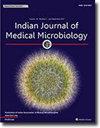Pertussis in India: Vaccine-driven evolution, waning immunity, and the urgent need for Tdap boosters
IF 1.3
4区 医学
Q4 IMMUNOLOGY
引用次数: 0
Abstract
Background
Pertussis, once controlled by whole-cell pertussis (wP) vaccines, has resurged due to the shift to acellular pertussis (aP) vaccines, waning immunity, antigenic variation, and macrolide resistant Bordetella pertussis strains. Despite high DTwP coverage, India continues to face a significant burden and this review synthesizes current knowledge and advocates for enhanced surveillance, updated vaccination strategies, and targeted interventions to reduce the clinical and public health impact of pertussis.
Methods
Epidemiological data, genetic studies, and immunological insights from global and Indian contexts were reviewed. Information was obtained from PubMed, MEDLINE, Google Scholar, and WHONET. Particular attention was given to genomic surveillance, vaccine-induced antigenic shifts, and real-world outcomes of DTwP and aP vaccines.
Results
Despite high DTwP vaccine coverage, India accounts for 26.5 % of global pertussis cases, driven by waning immunity, low booster uptake, and the spread of vaccine-escaped ptxP3 strains. The emergence of macrolide resistance further challenges disease control, with selective pressures influencing genetic shifts in B. pertussis. While wP vaccines provide long-lasting immunity, aP vaccines offer shorter protection and induce linked-epitope suppression, contributing to the resurgence of pertussis.
Conclusion
There is an urgent need for Tdap booster programs in adolescents and adults to address waning immunity and evolving strains. Strengthened genomic and immunological surveillance, alongside innovative vaccine formulations and delivery systems, are critical forsustainable pertussis control in India.
印度百日咳:疫苗驱动的进化,免疫力下降,以及对百日咳增强剂的迫切需求
背景百日咳,曾经由全细胞百日咳(wP)疫苗控制,由于转向无细胞百日咳(aP)疫苗、免疫力下降、抗原变异和百日咳博德泰拉菌株对大环内酯耐药,百日咳再次流行。尽管百日咳疫苗的覆盖率很高,但印度仍然面临着沉重的负担,本综述综合了目前的知识,并倡导加强监测、更新疫苗接种战略和有针对性的干预措施,以减少百日咳的临床和公共卫生影响。方法回顾全球和印度的流行病学资料、遗传学研究和免疫学见解。信息来自PubMed、MEDLINE、谷歌Scholar和WHONET。特别关注基因组监测,疫苗诱导的抗原转移,以及DTwP和aP疫苗的实际结果。结果尽管DTwP疫苗覆盖率很高,但由于免疫力下降、加强剂吸收量低以及疫苗逃逸的ptxP3株的传播,印度的百日咳病例占全球百日咳病例的26.5%。大环内酯耐药性的出现进一步挑战了疾病控制,选择压力影响百日咳的遗传变化。虽然白粉病疫苗提供持久的免疫,但联合疫苗提供较短的保护并诱导连锁表位抑制,有助于百日咳的复发。结论迫切需要在青少年和成人中开展Tdap加强计划,以解决免疫力下降和毒株进化的问题。加强基因组学和免疫学监测,以及创新疫苗配方和输送系统,对印度的百日咳可持续控制至关重要。
本文章由计算机程序翻译,如有差异,请以英文原文为准。
求助全文
约1分钟内获得全文
求助全文
来源期刊

Indian Journal of Medical Microbiology
IMMUNOLOGY-
CiteScore
2.20
自引率
0.00%
发文量
154
审稿时长
73 days
期刊介绍:
Manuscripts of high standard in the form of original research, multicentric studies, meta analysis, are accepted. Current reports can be submitted as brief communications. Case reports must include review of current literature, clinical details, outcome and follow up. Letters to the editor must be a comment on or pertain to a manuscript already published in the IJMM or in relation to preliminary communication of a larger study.
Review articles, Special Articles or Guest Editorials are accepted on invitation.
 求助内容:
求助内容: 应助结果提醒方式:
应助结果提醒方式:


